Parkinson's disease


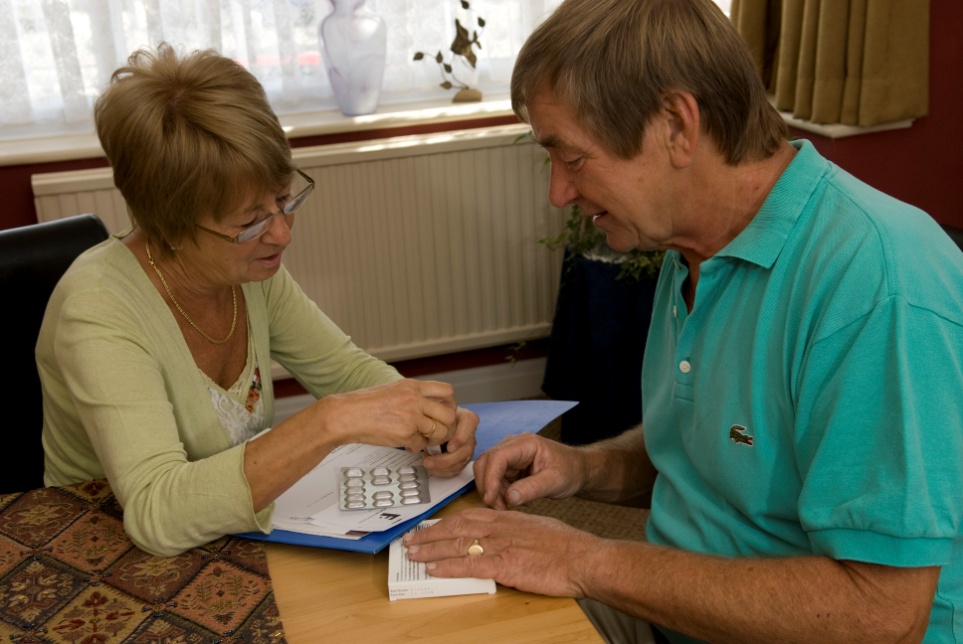
Parkinson's Disease
Training for Carers:
Module Two
Parkinson's Disease
Management
GUILDFORD PARKINSON'S
DISEASE RESEARCH GROUP
Fact sheets 6-10
Contents
Aim and learning outcomes
Fact sheet 6
Multidisciplinary team management
Fact sheet 7
What treatment is needed at different stages of Parkinson's disease
Fact sheet 8
Fact sheet 9
Tips for taking medicine
Fact sheet 10
Other treatments for Parkinson's disease
Appendix
More about Parkinson's disease medicines
Aim and learning outcomes
The aim of this module is:
o
to provide basic knowledge and understanding of the best-practice ways of managing Parkinson's disease.
By the end of Module Two you will:
o
understand the nature of multidisciplinary team management of Parkinson's and the roles of different team members;
know how treatment changes as the disease progresses.
understand the importance of medicines in the treatment of Parkinson's and know the main types of medicines that are prescribed;
be aware of the problems that people with Parkinson's may have with medicine taking and know what can be done to help;
be prepared to learn more about the roles of physiotherapy, occupational therapy and speech and language therapy in Modules Three and Four.
Fact sheet 6
Multidisciplinary team management
Who takes care of people with Parkinson's disease?
More people are living to an old age when they are more likely
to get Parkinson's disease, so the numbers who have
Parkinson's are increasing. Most people want to:
be independent and live in their own homes;
have a good quality of life;
receive care when they need it that is based on their particular requirements.
People with Parkinson's may need support and care in order to
remain living in their own homes, especially as the disease
progresses and they become older.
People with Parkinson's need help from a multidisciplinary
team (MDT) of health and social care professionals.
Members of the MDT work together to:
assist with the variety of problems caused by Parkinson's;
monitor progress and medicines;
give information and support self care;
prevent problems, like falls.
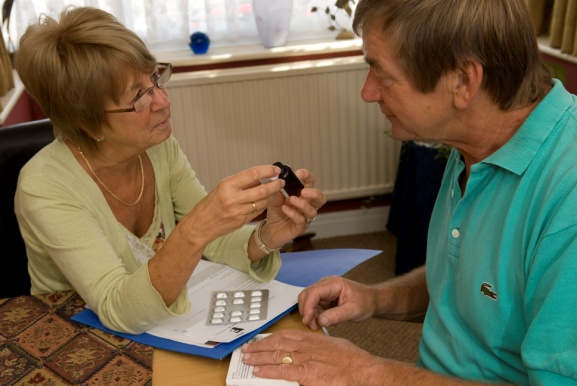
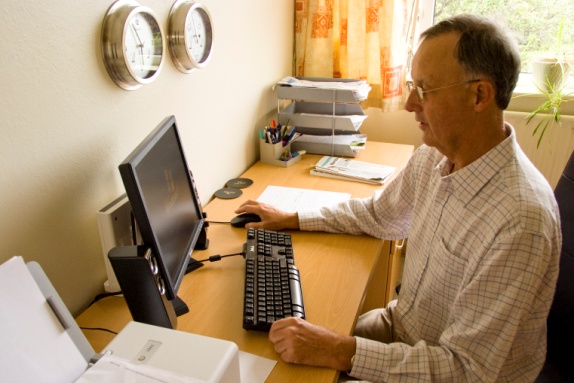
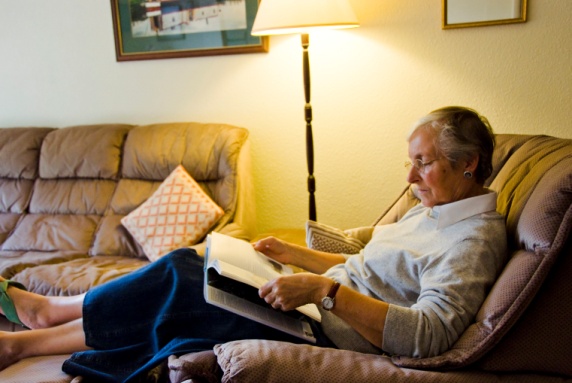
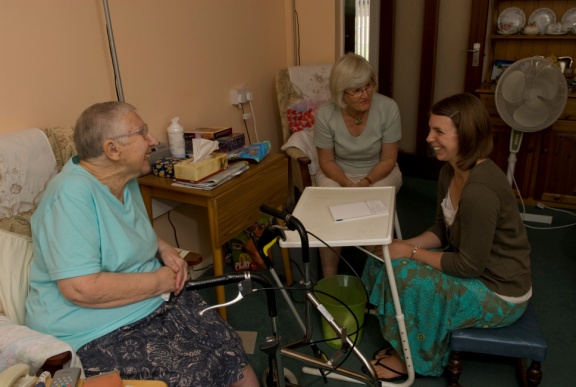
Monitoring progress and medication and giving information
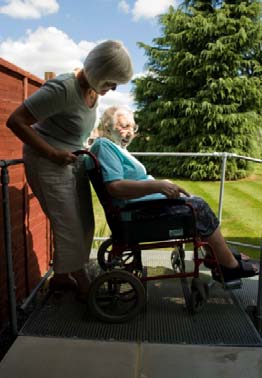
Who does what in the MDT?
Each of the health and social care professionals in the MDT has
a different role. The things they help with are listed in the
following table (page 7).
Team members work together to help to meet the needs of
individual patients and carers. When available, specialist
Parkinson's disease nurses coordinate the MDT.
For the team to work well, each member must be good at:
listening to patients and carers;
noticing problems that people are having or changes in their condition (clinical observation);
communicating with their clients and with other MDT members.
Not all people with Parkinson's need to see all members of the
team all of the time.
Some key members of the MDT
Neurologist with special interest
in Parkinson's
Parkinson's Disease
Nurse Specialist
(PDNS)
Physiotherapist
Roles in the multidisciplinary team (MDT)
Team member
Specialist doctor e.g.
Diagnosis and review of people with
Neurologist or in care of
Parkinson's. Clinical management. Prescribes
the elderly (Geriatrician)
Doctor – General
Looks at the whole person and what other
Practitioner (GP)
illnesses or problems they have.
To give information and support. PDNSs work
Parkinson's Disease
with doctors and other members of the MDT.
Nurse Specialist (PDNS) They monitor, record and review the progress,
care plan and medicines of patients.
Helps with exercises to improve mobility. Helps with ways to manage everyday activities
Occupational therapist
and leisure pursuits.
Speech and language
Helps with communication and swallowing.
Liaises with dietician on eating and drinking.
Gives advice about healthy diet.
Continence advisor
Helps with bladder and bowel problems.
Helps with relationship and sexual problems. Helps with medicines, both prescribed by
doctor or nurse, and purchased by patients. Helps with non-medical services: home care,
Social care manager
respite and benefits. Helps with emotional problems, like depression
Psychologist/counsellor
and anxiety, without medicine.
Psychiatrist (specialist
Helps with emotional, mental and behavioural
doctor for serious mental problems like depression, anxiety, confusion
and dementia. Uses medicine.
Community psychiatric
Provides support for psychiatric problems.
Parkinson's UK (PD UK);
Helps with information on services and self-
help. Provides a social and support network.
local/Community Support
What is the role of a Care Assistant in the MDT?
Care assistants work with patients and carers in a supportive
role carrying out tasks they have been trained to do, and asked
to do by their manager.
Professionals in the MDT will assess a person with Parkinson's
and agree a care plan with them. Care assistants can help to
implement the care plan.
Care assistants should be:
trained in personal care and clinical observation;
good at communication – within the MDT and with patients and carers;
able to follow a care plan and make records.
What about accountability for care assistants?
Care assistants are accountable for the work they undertake.
They should only carry out work as specified in the care plan
that:
they are competent to do;
they have been properly trained to do;
they have been delegated to do by their manager.
Guidance about accountability is available from the Royal College of Nursing – see
First key message
When caring for someone with Parkinson's you should:
LISTEN carefully to make sure you understand their needs
and concerns;
GIVE THEM TIME because Parkinson's may make all
movements, including communication, slower;
LOOK FOR THE PERSON BEHIND THE MASK
because people with Parkinson's may lack facial
expression. This does not mean the person is not interested
or interesting.
When caring for someone
with Parkinson's it is very important to:
GIVE TIME
LOOK FOR THE PERSON BEHIND THE MASK
Fact sheet 6 exercise
What do you know about your local MDT team?
Where could you go to find out more?
Describe some contacts you have made with other health and
social care professionals.
Think of some examples of when a person with Parkinson's
should see other members of the MDT? How would you make
the referral?
Notes:
Fact sheet 7
What treatment is needed at different stages?
How is Parkinson's disease treated?
H
There is no cure for Parkinson's disease. Treatment aims to
control symp
control sym toms and prevent
s, and depends on the
stage of the Parkinson's disease. Early on, advice and information may be all that is needed.
Early on, advice and informNewly diagnosed people should be offered details of
Newly diagnosed people shoulParkinson's UK (PD UK). PD UK produces many useful information sheets. They run a network of local support services
informincluding community work
ers and local groups.
When symptoms start to interfere with everyday life, treatment is needed. Medicines can help control symptoms. A multidisciplinary team (MDT) of professionals can help maintain independence and improve quality of life. As Parkinson's gets worse, more treatment is needed. Drugs can have side effects that can be difficult to manage and many members of the MDT may be called upon to help. A minority of people have brain surgery to reduce severe symptoms of Parkinson's when other treatments are not effective. In late stages, people with Parkinson's might need nursing care.
What are the main stages of Parkinson's Disease?
There are four main stages in the treatment of Parkinson's.*
1. Diagnosis stage. Supporting people when they are told
they have Parkinson's and providing information. (Module One, Fact Sheet 5 explained more about diagnosis).
2. Maintenance – management stage. Drugs are working
well and symptoms are under control so that people are coping with the disease.
3. Complex problems stage. As the disease progresses,
symptoms are difficult to manage and complications arise, so several different medicines are needed.
4. Palliative stage. In the later stages, drugs are no longer
effective and may have to be reduced. Everyday life is very hard and nursing or palliative care is needed. Particular attention should be paid to:
skin and pressure points;
bowels and bladder;
nutrition and oral hygiene;
social needs and psychological well-being;
protecting the patient's dignity.
*These are the stages identified by Parkinson's UK, Parkinson's Aware in Primary Care (www.parkinsons.org.uk) and as presented by MacMahon D and Thomas S in Journal of Neurology 1998; 245 (Suppl 1): S19-S22. (http://www.springerlink.com/content/qbjgak1kl36k2egd/fulltext.pdf)
Parkinson's stages and treatments
What is it like?
Treatment?
Mild symptoms.
Help to accept the diagnosis.
Provide information.
Some people find it
Provide support.
hard to accept that
Medicine, if needed to help
they have PD and to
manage everyday activities.
understand about it.
Advice from MDT.
Medicine to treat
Help to prevent
People live normally
More information and
Help from the MDT, as
needed, e.g. physiotherapy exercises.
Medicines are less effective
and often need adjustment.
complications, like
Extra medicines for side
‘on-off' fluctuations
effects and complications.
Patient and carer need
Life can become
Help from all the MDT.
May be surgery, if
Parkinson's medicines may
Quality of life is
Patient and carer need much
Nursing care. Protect patient's dignity.
Fact sheet 7 exercise
Brian and Margaret Williams are an elderly couple in their 80s.
Brian had a serious stroke 5 years ago which has left him as a
wheelchair user. With daily support from a care assistant,
Georgia, who comes every afternoon they have been managing
well.
One afternoon when Georgia arrives to help, she finds Margaret
is very distressed. Margaret went to see her GP because she
noticed her right hand was getting shaky and he told her she has
Parkinson's disease. She was so shocked that she couldn't really
take in what else he said. All she understood was that it was
going to get worse and worse. She can't bring herself to tell
Brian because she thinks this means the end of any independent
life for the two of them.
How can Georgia help?
Notes:
Fact sheet 8
Medicines for Parkinson's Disease
How do medicines for Parkinson's work?
Parkinson's disease is caused by a lack of a chemical called
dopamine in the brain. When dopamine levels are too low,
nerve cells in the brain do not send clear messages to muscles in
the body, and movement problems arise. (This was explained in
greater detail in Module One, Fact Sheet 2).
Medicines for Parkinson's help increase the amount of
dopamine available. They are called dopaminergic drugs.
There are several different types of dopaminergic medicines that
doctors can choose from. Each type works in a slightly different
way. People may need to take a range of strengths and types of
Parkinson's medicines each day.
What are the different types of medicines for
Parkinson's disease?
There are six main types of medicine for Parkinson's:
1. ‘Levodopa' is a manufactured form of dopamine. It replaces
the dopamine that is lost in the brain and is effective at preventing the symptoms of Parkinson's.
2. ‘Dopamine agonists' stimulate the dopamine system. They
‘switch on' the dopamine receptor sites in the brain.
3. MAO-B inhibitors slow the breaking down of dopamine in
the brain and stop it being lost.
4. COMT inhibitors are taken with levodopa to stop it being
broken down (lost).
5. Amantadine helps the brain cells to release dopamine.
6. Anticholinergics block the release of acetylcholine (a
chemical that works with dopamine) in order to maintain the balance of chemicals in the brain as dopamine stores decline.
A single drug may be known by several brand names – and by
different names in other countries. Before travelling abroad, it is
important that people with Parkinson's know the names of their
medicines in the country they are visiting.
The Appendix at the end of this booklet gives more information
about the names, use and side effects of the different types of
Parkinson's drugs.
What are the problems with Parkinson's medicines?
Everyone has different reactions to different medicines.
People's reactions to medicines change over time. The type of
medicine and the dose has to be regularly reviewed and
adjusted.
Medicines have various side effects. Common side effects
include feeling sick, dizzy, tired or having hallucinations.
New medicines may have to be introduced gradually.
How can problems with medicines be overcome?
It is very important to notice problems or changes that suggest
medicines need to be changed. Look for:
changes in Parkinson's disease symptoms;
new problems the person with Parkinson's is having;
side effects that are troublesome.
Tell the Parkinson's Disease Nurse Specialist (PDNS) or doctor about these problems. They can help by changing:
the type of medicine;
the size of dose;
or the timing of when it is taken.
Much research is underway to try and find new and better medicines for Parkinson's disease.
Long-term management of Parkinson's
More about levodopa (L-dopa)
Levodopa is effective at controlling Parkinson's symptoms
Most people with Parkinson's have levodopa at some time.
It is usually taken by mouth, absorbed into the blood in the
stomach and taken to the brain where it is turned into dopamine.
When first started, levodopa may cause nausea.
Levodopa works well, but complications can develop after a few
years. Because of that doctors may delay prescribing it to
younger people and give them other Parkinson's medicines
instead. Levodopa is often the first choice medicine for older
people.
What are the complications that might develop after
some years taking levodopa?
1. ‘Wearing off': symptoms return when one dose wears off
before the next dose is due.
‘On-off' motor fluctuations, can occur suddenly:
a. ‘On' time is when medicines are working;
b. ‘Off' time is when medicines don't work well.
During ‘off' phases, people may have problems moving, become anxious, sweat and have pain in their limbs.
2. Dyskinesias (large uncontrolled movements), wriggling,
restlessness, jerking or writhing. These can happen at the peak of a dose and are painful and disabling.
3. Dystonia: a sustained involuntary muscle spasm resulting in
painful abnormal postures such as twisted head, neck, limbs or foot.
Complications should be reported to the PDNS or doctor who will try to reduce the complications by altering the medicine or the dose.
Fact sheet 8 exercise
Elli has had Parkinson's for 5 years. When you call, it takes her
much longer to answer the door than usual and you feel worried.
She has just had her medicines reviewed and altered. She
complains she is having many "off" periods.
What do you need to find out?
What should you do?
Who should you tell?
Notes:
Fact sheet 9
Tips for taking medicine
Does it matter when medicines for Parkinson's
disease are taken?
Yes it does. The timing of taking medicines for Parkinson's
disease is very important. It has to be carefully worked out for
each individual to give the most benefit with the least side
effects.
If a dose is forgotten, it should be taken as
soon as it is remembered. If it is already
time for the next dose – a double dose
should not be taken.
Second key message
It is very important that people with Parkinson's
TAKE THEIR MEDICINES ON TIME
Does it matter how medicines for Parkinson's disease
are taken?
Yes it does.
To get the best out of medicine it is important to follow the
instructions that come with it about:
o how much to take;
o how to take it (e.g. with food or before food);
o what times to take it.
Levodopa medicines are not absorbed so well if taken with food,
especially protein foods. Some foods take a longer time to digest
so it is best not to take Levadopa near a meal time. Avoid taking
them within one or one and a half hours of a meal.
Instructions will be different for other Parkinson's medicines.
If people are taking medicines for conditions other than
Parkinson's disease they should be checked by the doctor,
nurse or pharmacist in case they react with the Parkinson's
drugs.
What problems do people with Parkinson's disease
have with medicines?
Swallowing problems
Some people find it difficult to swallow pills.
Tips Ask the doctor or nurse:
o
if the pill can be put in a spoon of fruit purée or yogurt to help it slip down;
if pills can be crushed, or mixed into water;
if drugs are available in different forms e.g. as a liquid, a pill that dissolves on the tongue, an injection, or a skin patch.
Tips Steps to help to swallow:
sit down to take tablets;
take the pill with a mouthful of water;
avoid tipping the head backwards as this can cause choking;
tuck the chin in to help swallowing;
swallow again to ensure the pill goes down properly.
Nausea
Some people have nausea when taking Parkinson's medicines
on an empty stomach, especially the first dose of the day. These
feelings of nausea may be reduced if they eat a biscuit or
cracker, but only if this is appropriate for their ability to do so.
Practical problems
Child proof bottles are hard to open. Sometimes popping tablets
out of blister packs is a problem. Labels can be difficult to read.
Tip Ask the pharmacist for another sort of
pack and large print labels.
"Wearing off" problems
Parkinson's symptoms may get worse as the effect of the last
dose wears off, especially first thing in the morning.
Tip Keep the first morning dose by the bedside,
so that it is easy to reach.
If you suspect there are wearing off problems – ask the doctor or
nurse if the medicines, or the timing of doses needs to be
changed.
The doctor or nurse may be able to prescribe controlled-release
(CR) capsules, a skin patch or a pump for some people. These
methods deliver an even supply of the drug.
Problems managing several different medicines
Often people have several different medicines for Parkinson's.
They may also have medicines for other illnesses. So they have
many different pills to take at various times and can find it hard
to remember what to take and when.
Tips
To help organise medicines:
ask a carer or friend to go with the patient to the doctor or nurse when medicines are being reviewed to listen to the instructions;
make a written record of all the medicines, doses and times they should be taken;
use a pill box with separate compartments to set out each day's doses;
ask the pharmacists to help – they can organise medicines for a whole week;
set a timer or alarm clock as a reminder to take each dose of medication. Some pharmacists sell timers especially for pill taking, including a wrist watch with an alarm that can be set to ring or vibrate up to ten times a day and which displays the medication required on its screen.
Keep a written record
Two heads are better than one
to remember what the doctor said
Setting a timer as a reminder
Large print labels can help Using a dosette box to sort out medicines
Fact sheet 9 exercise
Mr Bingley has Parkinson's and lives alone, aged 92. You arrive
at 8am to stay for half an hour to help him get dressed and
prepare his breakfast. Sometimes when you arrive he has
already dressed himself with no problems and your visit seems
wasted. Other days he is very slow in his movements and
speech. He often freezes, so you can't get everything done in the
time you have. Mr Bingley can never remember if he took his
medicines at all, or if he did, he can't remember when he took
them.
Why is it important that he takes his medicines on time?
How could you help?
Notes:
Fact sheet 10
Other treatments for Parkinson's disease
Does brain surgery help?
Brain surgery may reduce specific symptoms of Parkinson's
disease but does not cure it. Brain surgery is not suitable for
everyone. A doctor will make an assessment.
Brain surgery carries risks such as bleeding, infection or causing
other problems (e.g. damage to vision, speech or balance).
Surgery can help some people with Parkinson's
How does surgery work?
There are two main types of surgery for Parkinson's disease:
1.
Deep brain stimulation. A wire is inserted deep in the
brain and connected to a stimulator and pulse generator,
similar to a heart pacemaker. The small pulse generator is
implanted under the skin in the upper part of the chest. The
implant sends electrical signals to change the brain activity.
Deep brain stimulation
Lesioning. The parts of the brain causing Parkinson's
symptoms are destroyed.
Further reading:
Parkinson's UK has an Information Sheet on:
‘Deep Brain Stimulation'.
What other treatments are there for Parkinson's
disease?
In addition to medicines, there are other ways that members of
the multidisciplinary team (MDT) can help people with
Parkinson's to manage their problems.
A physiotherapist can suggest the correct type of exercise to
help maintain mobility, and improve posture, balance and
breathing.
Exercise
An occupational therapist can suggest ways to help with
everyday activities.
A speech and language therapist can suggest exercises to help
with communication, eating, drinking and swallowing.
Counsellors and clinical psychologists can provide support
with emotional problems.
Community psychiatric nurses can advise on mental changes
and distress, including medicine side effects and depression.
Social care managers can organise help at home with personal
care and household tasks.
Dieticians can help maintain well-being by giving advice on a
healthy diet.
More information is given about how members of the MDT can
help in Modules Three, Four and Five.
Complementary and alternative therapies
Some people find treatments like aromatherapy and reflexology
help them to relax and cope with symptoms.
Music therapy and singing can help movement, communication
and mood. Group activities provide opportunities for social
interaction.
Some dietary supplements and herbal remedies can interfere
with the way prescribed medicines work and should only be
taken with the approval of the Parkinson's doctor or nurse.
Complementary therapies can help
Are any new treatments for Parkinson's disease being
developed?
Scientists want to find a cure for Parkinson's and to make better
medicines.
There is a lot of research going on looking for the genes that
cause Parkinson's.
Stem cells have the ability to develop into all cell types,
including brain cells. Stem cell experiments are being carried
out, but much more research is needed.
Eventually it may be possible to identify people who are at risk
of getting Parkinson's and give early treatment to prevent or
limit it.
Further reading:
Parkinson's UK has an Information Sheet on:
‘Stem cell research'.
Supporting carers
The friends and family of someone with Parkinson's provide
important physical and emotional support. But living with
Parkinson's as a family carer can cause strain. Carers may need
assistance and advice on where to go for help.
Because people with Parkinson's are often elderly, their carers
may be elderly too, and have medical problems of their own.
Individuals have different needs. Some carers may find a carers
group helpful while others might prefer individual advice or be
able to cope alone.
Carers' needs can change over time and should be monitored by
the MDT. A carer may not want assistance at one stage but may
accept help later on.
When someone has young onset Parkinson's, the carers may be
their dependent children who are living at home. This can create
different problems.
There is more information about supporting carers in Module
Five, Fact sheet 25.
Fact sheet 10 exercise
Penny Matthews has had Parkinson's for 5 years. She has been
living a normal life with the help of some medication to manage
her symptoms. She enjoys yoga and playing golf. She denies
that she has any problems. Her husband Jack confides in you
that he is sick with worry because Penny is regularly losing her
balance and has had several falls.
What would you do or say?
Who else would you involve, if anyone?
Notes:
Remember the key messages
First key message
When caring for someone
with Parkinson's it is very important to:
GIVE TIME
LOOK FOR THE PERSON BEHIND THE MASK
Second key message
It is very important that people with Parkinson's
TAKE THEIR MEDICINES ON TIME
Appendix:
More about Parkinson's disease medicines
NOTE: Brand names of medicines can vary
Generic and
How it works
Side effects
(Brand) name
What it does
Nausea, drowsiness,
Replaces dopamine in
dizziness, vivid
dreams, hallucinations.
Complications arise
Provides symptom
after some years:
wearing off effects,
diminishing effect
"on/off" fluctuations,
dyskinesias, dystonias.
dopamine system/
Nausea, drowsiness,
‘switches on' the
dizziness, vivid
dopamine receptor
dreams, hallucinations.
Dyskinesias, dystonias
Provides symptom
Ergot type can affect
Taken alone (to delay
the heart and lung
Non ergot type: the use of levodopa) or valves so are not used
with levodopa. Lower
often. Pergolide is
levodopa doses are
being withdrawn.
possible to reduce
complications. For freezing – acts
Requires specialist
quickly to improve
mobility – rescue
Doesn't help everyone.
Needs an anti-nausea
continuous dopamine
Side effects as other
stimulation to reduce
dopamine agonists.
Generic and
How it works
Side effects
(Brand) name
What it does
Slows breakdown of
Few side effects. Mild
dopamine by Mono-
stimulant, may impair
(especially with
Used with levodopa.
Slows the breakdown
Nausea, dizziness,
drowsiness, vivid
Catechol-O-Methyl
dreams, hallucinations.
Transferase (COMT)
Dyskinesias can be
severe. Diarrhoea.
Lower levodopa dose
Turns urine orange.
possibly to reduce
"on/off" fluctuations. Promotes the release
Mild effect. Doesn't
Sometimes used with
levodopa to control
dyskinesias. Blocks the action of the chemical
acetylcholine (works
with dopamine) to
keep a balance as
effects: confusion,
dopamine declines.
hallucinations, dry
mouth, constipation,
symptoms in younger
urinary hesitancy,
people, especially
blurring of vision.
drooling and urge incontinence.
Further Reading: Parkinson's UK has an Information Sheet on:
‘Drug treatm
Training materials produced by Lesley Axelrod, Heather Gage and Julie Kaye for the Guildford Parkinson's Disease Research Group. This work was supported by a research grant from Parkinson's UK. Diagrams courtesy of European Parkinson's Disease Association (EPDA), H Lundbeck A/S and Teva Pharmaceutical Industries. Unless otherwise acknowledged, photographs were kindly provided by Brian Nolan, supported by an educational grant from UCB Pharma. People in the photographs do not necessarily have Parkinson's. University of Surrey 2010
Source: http://www.gpdrg.org/documents/Module2.pdf
ri.conicet.gov.ar
5834 • The Journal of Neuroscience, March 27, 2013 • 33(13):5834 –5842 Central Dopamine D2 Receptors Regulate Growth-Hormone-Dependent Body Growth and Pheromone Signaling toConspecific Males Daniela Noaín,1* M. Ine´s Pe´rez-Milla´n,2* Estefanía P. Bello,1 Guillermina M. Luque,2 Rodrigo Casas Cordero,1Diego M. Gelman,1 Marcela Peper,1 Isabel García Tornadu,2 Malcolm J. Low,3 Damasia Becu´-Villalobos,2and Marcelo Rubinstein1,41Instituto de Investigaciones en Ingeniería Gene´tica y Biología Molecular, and 2Instituto de Biología y Medicina Experimental, Consejo Nacional deInvestigaciones Científicas y Te´cnicas, C1428ADN Buenos Aires, Argentina, 3Department of Molecular and Integrative Physiology, University of MichiganMedical School, Ann Arbor, Michigan 48105, and 4Facultad de Ciencias Exactas y Naturales, Universidad de Buenos Aires, C1428EGA Buenos Aires,Argentina
jwa.org.hk
A Discussion for the JWA Amy Mines Tadelis October 29, 2014 • Cancer prevention is action taken to lower the chance of getting cancer; the number of new cases of cancer in a group or population is lowered. • To prevent new cancers from staring scientists look at risk factors and protective factors. Anything that increases your risk of developing cancer is cal ed a risk factor and anything that decreases your chance of developing cancer is cal ed a protective factor.